Home Entertainment Blog Archive
Brought to you by your friendly, opinionated, Home Entertainment and Technology writer, Stephen DawsonHere I report, discuss, whinge or argue on matters related to high fidelity, home entertainment equipment and the discs and signals that feed them. Since this Blog is hand-coded (I like TextPad), there are no comments facilities. But feel free to email me at scdawson [at] hifi-writer.com. I will try to respond, either personally or by posting here emails I consider of interest. I shall assume that emails sent to me here can be freely posted by me unless you state otherwise.
This archive is for an uncertain period commencing Thursday, 17 July 2003
I've just added to the DVD Links section on the Blog a link to 'The Chopping List', which contains lots of fascinating information about which movie bits we Australians don't get to see, thanks to Australian (and sometimes foreign) censors.
The SMR Home Theatre web site has a fascinating, if in parts depressing, report on 'Surround Professional 2002'. What was fascinating was an insight into the surround mixing philosophy of some highly regarded professionals. Here are a few excerpts from one of the pages:
When asked about using the center channel more for vocals, Scheiner recounted his first surround mix, where he had placed the vocals exclusively in the center channel. The singer, whom he wouldn’t name but said was 'your typically insecure diva', found out from her manager that it was possible to turn down the other channels and hear just her vocals. Scheiner said he 'caught hell' for his mix, adding 'I'll never do that again!' The other panel members agreed completely. ...Depressing indeed.None of them mixed with bass management in mind. When asked about the .1 LFE channel, Botnick said that his mixes were all basically 5.0, but that he 'always put something, anything, into the sub channel so that the light goes on and people don’t complain that it's not really 5.1.' The others laughed in agreement, 'Gotta light up all the lights!' ...
Sheiner also complained about all the questions regarding use of the center channel, 'Why does everybody keep bringing that up?' I explained that it allowed listeners all over the room to point to the same location for the vocalist. For a moment, I saw a light bulb go on over his head as he finally seemed to 'get it', but just as quickly dim. 'Yeah, it makes sense, but I couldn’t do that.'
 One of the beaut things about DVD Audio is the ability it has to carry six channels of sound at an incredibly high resolution of 96kHz sampling rate and 24 bits of detail. There is no recording format (and here I include SACD) that has the potential to capture the original signal with more accuracy than this (except, possibly, two channel DVD Audio using a 192kHz sampling rate). To get all this data onto the DVD and keep the bit rate down to specification, DVD Audio employs a new non-lossy compression system called MLP, for Meridian Lossless Packing.
One of the beaut things about DVD Audio is the ability it has to carry six channels of sound at an incredibly high resolution of 96kHz sampling rate and 24 bits of detail. There is no recording format (and here I include SACD) that has the potential to capture the original signal with more accuracy than this (except, possibly, two channel DVD Audio using a 192kHz sampling rate). To get all this data onto the DVD and keep the bit rate down to specification, DVD Audio employs a new non-lossy compression system called MLP, for Meridian Lossless Packing.
But sometimes you have to wonder whether it's worth it. Consider, for examply, a recent recording of Daniel Barenboim conducting the Berliner Staatskapelle in Beethoven's 7th Symphony (Teldec 8573-83062-9 -- the 8th Symphony is also on this DVD Audio).
This happens to be a superb performance, regardless of format. I had the opportunity to listen to all three formats: CD, Dolby Digital 5.0 and five channel MLP (the subwoofer channel is not used on this recording). All were obviously from the same source recording. The giveaway was as unsubtle as a spurious noise in all three recordings one minute into the 1st movement (possibly a microphone stand being kicked, although it has more the sense of a very brief electrical dropout).
In terms of which sounded the best, I had to give it to 96kHz, 24 bit MLP. This disc was recorded in five channel 96kHz 24 bit, so that is the way in which it ought to be heard. Both the MLP and Dolby Digital surround versions are sensibly encoded with nothing more than ambience in the surround channels. This is excellent. These channels remain inaudible to the ear as individual sound sources, but do add an extraordinary amount of stage depth to the performance.
The reason the MLP came up tops was that it provided a slightly smoother, cleaner and more coherent result than either the DD or CD versions. A breath from a member of the orchestra in the 2nd movement was clearly that, and precisely placed. In both the CD and Dolby Digital versions, the breath sounded as thought it might, perhaps, be a breath but I couldn't be quite certain.
The CD took second place. The 1st violins sound a little edgier than the MLP version, and there was a lack of the airiness presented by both the MLP and Dolby Digital renditions. Dolby Digital came last, although not by much. It captured much the same air as the MLP, but lacked the fine detail available from the CD and MLP versions.
 But I have to remark upon the mistake. An amazing mistake. An incredible mistake. In the first movement of the 7th Symphony, in all three versions, a clearly audible 11,140 hertz sine wave makes an appearance, accompanied by a much subtler 7,960 hertz tone, for a few seconds at around 9:30 in. This is decidedly irritating and I have no idea where it could have come from. But it's there. Don't believe me? Download
this 15 second MP3 (230kB) snippet and listen for yourself. Note also the spectrum analysis. See those high frequency spikes?
But I have to remark upon the mistake. An amazing mistake. An incredible mistake. In the first movement of the 7th Symphony, in all three versions, a clearly audible 11,140 hertz sine wave makes an appearance, accompanied by a much subtler 7,960 hertz tone, for a few seconds at around 9:30 in. This is decidedly irritating and I have no idea where it could have come from. But it's there. Don't believe me? Download
this 15 second MP3 (230kB) snippet and listen for yourself. Note also the spectrum analysis. See those high frequency spikes?
I have to wonder how this could happen. Didn't anyone from Teldec listen to the final product before signing off on it? I can understand such things slipping through on a budget CD, but on a DVD Audio, the main selling point of which is sound quality, this is unacceptable.
I must also comment on the discrimination against those with no more than a standard DVD player. While any deficiences in sound quality must be attributed to Dolby Digital, there really is no reason why a few of the user conveniences couldn't have been included. The Dolby Digital version is not placed in the usual Title/Chapter heirarchy, so many DVD players find themselves without access to such facilities as on screen display. Further, there seems to be a User Operation Prohibition on the fast forward and rewind keys. If you want to skim back and repeat a section of the music, well ... you can't, and that's all there is to it. You just have to go back to the start of the track and play it all the way through again.
Occasionally you stumble across reports of people capable of performing jaw-dropping feats. Take this guy, for example. Merely by examining the grooves on vinyl records he was able to deduce, with a very high level of accuracy, what the music was -- assuming it was classical from the time of Beethoven or later.
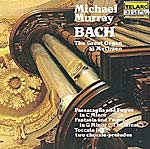 I used to own about six vinyl versions of Bach's Passacaglia and Fugue in C minor. I accumulated that many in pursuit of bass. The theme is largely carried on the pedals and ought to end one several of its cycles on the lowest C pedal. Depending on the design of the organ, this ought to be around 32 hertz and, in the case of organs with really big pipes, 16 hertz.
I used to own about six vinyl versions of Bach's Passacaglia and Fugue in C minor. I accumulated that many in pursuit of bass. The theme is largely carried on the pedals and ought to end one several of its cycles on the lowest C pedal. Depending on the design of the organ, this ought to be around 32 hertz and, in the case of organs with really big pipes, 16 hertz.
My collecting came to an end when I finally purchased a Telarc recording. This had a monster organ, 16 hertz fundamental, and a bone-chilling increase in volume towards the end of the Passacaglia. (It's still available on CD.)
Notably, the modulation of the groove was clearly visible during the loud bits, with (from memory) excursions up to a millimetre or so! Of course, few LPs carried such deep, loud bass for the simple reason that it uses up so much disc surface. Records with such widely spaced grooves were necessarily short in duration.
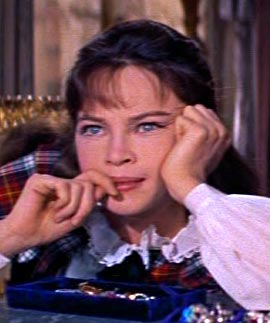 Funny sound mix -
Sunday, 20 July 2003, 12:56 am
Funny sound mix -
Sunday, 20 July 2003, 12:56 am
Dolby Digital, as I have pointed out, isn't necessarily 5.1 channels. Many DVDs are two channels (2.0), quite a few offer one channel sound (1.0), and some odd ones even manage 3/1.0 (ie. three front channels, and one surround channel). But this evening I pulled out my Region 4 Warner DVD of Gigi to watch for the first time, and discovered that this is the sole 3/0.0 disc in my collection. What does 3/0.0 mean? It means that the front three channels are used, but there is nothing from the surround channels.
If this seems odd, remember that the movie was released in 1958. That was the days of the on-again, off-again experimentation of film-makers with various forms of stereo sound. This didn't actually settle down until 1977's Star Wars, which was the first movie to use Dolby Stereo. In the world of cinema, 'stereo' means surround sound. (Dolby Pro Logic is an enhancement of Dolby Surround which, in turn, is the home version of Dolby Stereo.)
In Gigi, this experimentation is interesting, even though a little off-putting. The practice in most movies these days is to feed virtually all the dialogue out of the centre channel, no matter where on the screen the characters happen to be located. In Gigi, though, the dialogue pans across the three front speakers to match the characters' locations, after a fashion. Unfortunately, the panning sometimes lags, and there is the occasional clunky switch of audio pan during conversations between characters.
Another obvious audio problem is the break in recording continuity as Gaston reconsiders Gigi's development. He is in front of a fountain and suddenly there's a switch from location to studio recording.
Also off-putting was the Cinemascope filming, in parts at least. The lens produced considerable distortion at the edge of the widescreen picture. Forgivable, perhaps, except when characters wander into the zone of distortion and suddenly became remarkably thin.
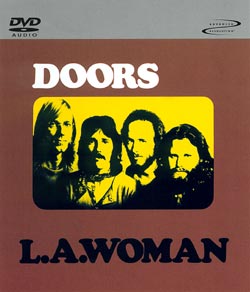 I'm in the middle of reviewing a pentuplet of DVD Audio players and, thinking I knew it all, stumbled across something new to me: DVD Audio bonus groups. Now the
DVD Forum, in its wisdom, chose to abandon the familiar Title/Chapter nomenclature from DVD Video when specifying DVD Audio. Instead it uses Group/Track as the primary divisions between material, with Page for different video screens capable of being shown without interrupting the audio flow (for example, you might be able to choose between lyrics and photos, while the music plays on regardless).
I'm in the middle of reviewing a pentuplet of DVD Audio players and, thinking I knew it all, stumbled across something new to me: DVD Audio bonus groups. Now the
DVD Forum, in its wisdom, chose to abandon the familiar Title/Chapter nomenclature from DVD Video when specifying DVD Audio. Instead it uses Group/Track as the primary divisions between material, with Page for different video screens capable of being shown without interrupting the audio flow (for example, you might be able to choose between lyrics and photos, while the music plays on regardless).
I had previously noticed on some DVD Audio players a 'Bonus Group' setting on the Setup menu, but hadn't thought much of it. In the current round, though, I chose The Doors L.A. Woman to audition a player. Checking its navigation facilities, I keyed through the four Groups available on the disc (Group 1 is the surround mix, Group 2 is the stereo mix, Group 3 is the film clip in Dolby Digital, and Group 4 is the Elektra Entertainment logo). But there is also a Group 5, which is apparently a 'Bonus Group'. See the screen shot below, which shows the password entry panel that is brought up when you navigate to this Group using the 'Search' key on an Onkyo DV-SP800 DVD-V/DVD-A/SACD player. There appear to be no menu or other links to this Group on the disc.
Googling around has no information specific to bonus groups on any discs, although a PDF format DVD Forum recommendation for DVD Audio, dating from early 2000, says that a bonus group, alternatively known as a 'hidden group', should be accessible using a four digital number (although it does not insist on a link to the group within the disc's menu system).
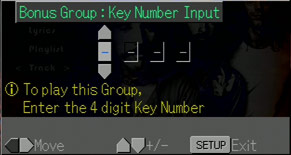 What is does recommend is information:
What is does recommend is information:
3.2 For Disc Jacket and Booklet, etc.Well this disc does not have any indication on its jacket that there is a bonus group. It is quite possible that the addition of a bonus group was unintentional. Sometimes, particularly in the early days of mastering a new technology, the people involved have trouble working how to turn certain facilities off. For example a number of early Roadshow titles in Australia have silent MPEG audio tracks because, apparently, the mastering people thought that there was no facility to completely omit MPEG (maybe this was the case with their early software).
When a disc has a Bonus Group,
- Some notation for existence of the Bonus Group should be described on Disc Jacket, etc.
- Indication for the Group number of the Bonus Group should be described on Disc Jacket, etc.
- Instruction how to get Key Number should be introduced on Disc Jacket, etc.
The whole concept of a bonus group is a bit confusing anyway, since quite a few DVD Audios have 'bonus tracks' (sometimes in their own groups!) If this is used, the better terminology would be 'hidden group'.
Looking through my DVD Audio collection, I now discover that the following discs have bonus groups (although no mention of such on their jackets):
- The Corrs: In Blue (Group 4)
- Deep Purple: Machine Head (Group 6)
- The Eagles: Hotel California (Group 4)
- Emerson, Lake and Palmer: Brain Salad Surgery (Group 4)
- B.B.King & Eric Clapton: Riding with the King (Group 2)
- Queen: A Night at the Opera (Group 9)
- Deep Purple: Machine Head (Group 6)
UPDATE (Wednesday, 30 July 2003, 9:20 am): DTS responds.
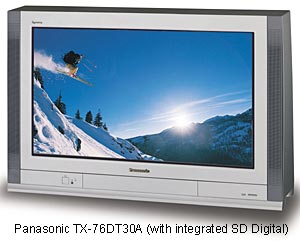 Meanwhile,
Panasonic has gone digital. It's introducing two digital set top boxes and a 76cm widescreen TV with integrated Standard Definition digital tuner (the
TX-76DT30A). This $4,399 TV is available now.
Meanwhile,
Panasonic has gone digital. It's introducing two digital set top boxes and a 76cm widescreen TV with integrated Standard Definition digital tuner (the
TX-76DT30A). This $4,399 TV is available now.
The cheaper of the two set top boxes supports SD only (model TU-CT20A) and, at $549, seems to be a little overpriced in that it lacks digital audio outputs (you can get the RCA and Zinwell boxes, with similar capabilities, for quite a bit cheaper). The TV seems a bit pricy too. While it's a good 100 hertz 76cm widescreen model, it doesn't get the 'Fine Pitch' treatment of the other new Panasonic model. Add the $3,629 of this model to the $549 of the SD box and you get $4,178, or more than $200 cheaper
 
|
The other set top box (model QTR2140) is a welcome addition to the line up since it competes in the very limited high definition field which, until now, has been exclusively DGTEC's. This supports up to 1080i and has a full set of digital audio outputs. It will sell for $989. Both set top boxes are scheduled to be available in August 2003.
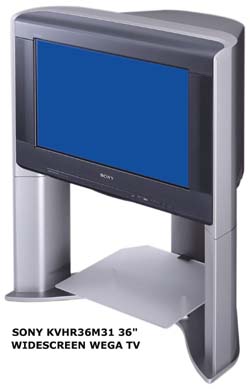
Sony will shortly (September 2003 in Australia) be introducing an 86cm widescreen CRT TV (model KVHR36M31) which it says will increase the number of slits in its grill by 65%, 'making this the aperture grill with the highest number of vertical slots on the market.' Since Sony is the principal producer of aperture grill-based TVs (aka Trinitron, which was invented by Sony in the late 60s), this isn't surprising. But it is welcome. Sony calls this 'Super Fine Pitch'. I'll be getting one to review in September. I'm kind of looking forward to it, except for the weight. Such large CRTs usually weigh in excess of 60kg.
Panasonic has also introduced something along similar lines, except it uses the more traditional shadow mask in its TV tubes. Called 'Fine Pitch', the TX-76PW150A only offers '30% more phosphor dots' than usual. Since this is a 76cm model, a greater increase in resolution is probably not warranted.
Both these models represent real advances. The last few years have seen some interesting digital processing coming into TVs, but they have always been held back by tubes that offered no physical increase in resolution. This overcomes that.
Both TVs offer 100 hertz scanning, which is PAL's answer to progressive scan. Panasonic says its TV supports 576p input (but nothing about 480p, given the number of NTSC-only progressive scan DVD players there are out there). Sony says that its TV incorporates DRC-MF ('Digital Reality Creation - Multi-Function'). While its press release implies support for high definition input ('it also sets a new standard for viewing High Definition (HD) broadcasts'), it doesn't actually mention what, if any, input standards it supports.
UPDATE (Thursday, 17 July 2003, 7:16 pm): Sony gives me some good news and some bad news. The good: the KVHR36M31 will accept input sources delivering 480p, 576p, 720p and 1080i. Yippee! The bad: the TV doesn't weight 60kg, but 90kg. Gonna need a hand to get that up on my stand.
UPDATE 2 (Friday, 18 July 2003, 5:03 pm): Panasonic advises that this TV supports 480p (ie. progressive scan NTSC) input as well as 576p.